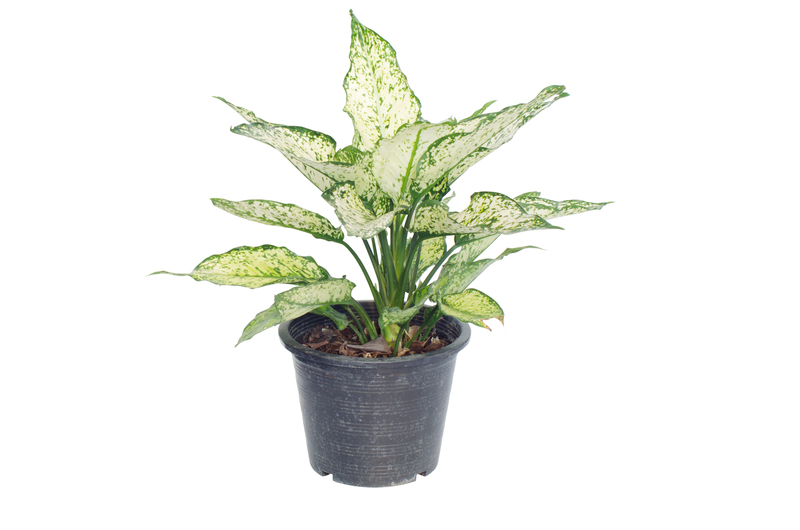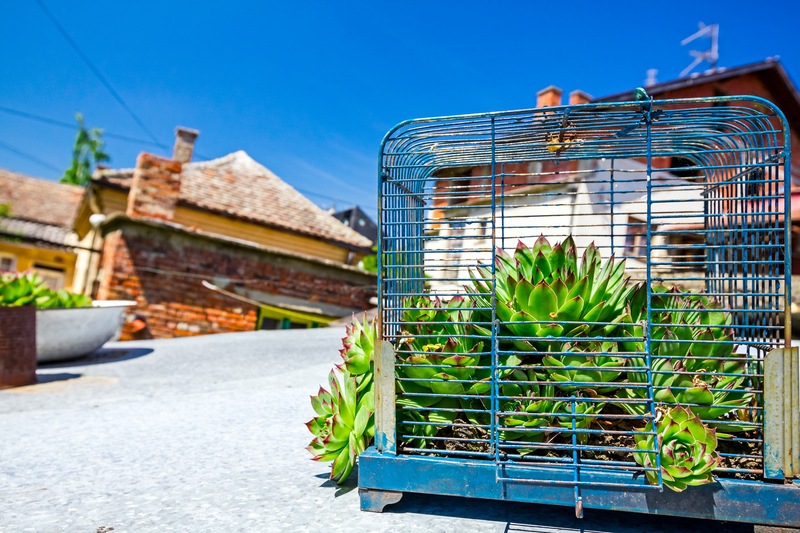Transform Dirt to Delight: 9 Foundational Gardening Tips
Posted on 19/06/2025
Transform Dirt to Delight: 9 Foundational Gardening Tips
Gardening is more than just a pastime; it's a transformative journey that turns simple soil into a thriving, beautiful outdoor retreat. Whether you're a novice gardener or an experienced green thumb, knowing the foundational techniques is key to cultivating a flourishing garden. In this guide, we'll share 9 essential gardening tips to help you transform dirt into a delightful garden that enhances your home, promotes biodiversity, and brings you endless satisfaction.
Why Foundational Gardening Matters
Understanding the basics is crucial for both the success and sustainability of your garden. Foundational gardening tips encompass everything from soil preparation and plant selection to watering and pest management. Mastering these essentials puts you on the fast track from "dirt" to "delight"-- transforming your outdoor space into a living masterpiece.
Benefits of a Well-Tended Garden
- Increased property value
- Improved air quality and habitat for wildlife
- Physical and mental health benefits
- Reliable source of fresh fruits, vegetables, or ornamental plants
- Aesthetically pleasing outdoor living space

1. Start with Healthy, Nutrient-Rich Soil
If you want to transform dirt to delight, begin by assessing your soil. The state of your soil is the foundation for everything that grows above it. Healthy soils are alive with beneficial microbes, earthworms, and organic matter.
- Test your soil: Purchase a soil test kit to discover pH levels and essential nutrients. Most garden plants thrive in slightly acidic to neutral soil (pH 6-7).
- Amend as needed: Use compost, well-rotted manure, or organic fertilizers to enrich depleted soil.
- Till and aerate: Loosen compacted ground so roots have room to breathe and grow.
Tip: Mulch your beds seasonally to retain moisture and further improve your soil's structure.
2. Choose the Right Plants for Your Climate and Soil
Plant selection is a key decision when aiming to transform dirt into a beautiful, healthy garden. Plants well-suited to your region's climate and your soil conditions will require less maintenance and be more resilient against pests and diseases.
- Research local native plants: These are naturally adapted and require minimal intervention.
- Consult plant hardiness zones to choose perennial or annual species that thrive in your area.
- Consider sunlight, water requirements, and mature size to avoid overcrowding.
Mixing a variety of species also helps to create a biodiverse and sustainable ecosystem in your home garden.
3. Plan and Design Your Garden Layout Carefully
Garden design plays a massive role in the transformation from bare dirt to stunning delight. Planning ahead saves time, maximizes space, and reduces long-term maintenance.
- Create maps or sketches of your beds, using graph paper or digital garden planners.
- Group plants with similar water and light needs together for efficient maintenance and irrigation.
- Factor in pathways, focal points, and room for growth over the seasons.
Take inspiration from local botanical gardens or gardening magazines to spark your creativity!
4. Commit to Regular and Smart Watering
Proper watering is essential in your quest to transform dirt to blossoming abundance. Too much or too little can quickly undo your hard work.
- Water deeply and less frequently: This encourages roots to grow deeper and strengthens plants.
- Water early in the morning or late in the evening to reduce evaporation.
- Consider soaker hoses or drip irrigation for efficiency.
- Mulch to help the soil retain moisture.
Monitor your plants for signs of underwatering (wilting, brown edges) or overwatering (yellowing leaves, root rot).
5. Feed Your Plants with Quality Fertilizers
Fertile soil can deplete over time, so regular fertilization is key to keeping your garden lush.
- Pick slow-release organic fertilizers for steady, sustainable nutrition.
- Follow instructions exactly--over-fertilization can damage roots and leach into groundwater.
- Top-dress with compost every season to continually improve soil health.
Remember, the ultimate goal is to nurture the soil, not just the plants. Healthy soil equals healthy gardens!
6. Master Mulching Techniques
Mulching is a gardener's secret weapon for transforming barren soil into a garden delight.
- Suppresses weeds
- Conserves moisture
- Regulates soil temperature
- Boosts soil fertility as it decomposes
Organic mulches like shredded bark, straw, or compost are excellent for most gardens. Apply a 2-3 inch layer, keeping mulch away from plant stems to prevent rot.
7. Keep Pests and Diseases Under Control
Every gardener wants to transform their patch of dirt into a flourishing, pest-free haven. Pest management requires vigilance and balance.
- Use companion planting techniques to naturally repel pests (e.g., marigolds with tomatoes).
- Inspect leaves and stems regularly for infestations or disease symptoms.
- Encourage beneficial insects such as ladybugs and lacewings.
- Opt for organic pest control methods when possible, such as neem oil or homemade sprays.
Prompt action prevents small issues from becoming big problems.
8. Prune and Maintain for Lasting Beauty
Pruning isn't just about aesthetics; it promotes plant health, prevents overcrowding, and boosts flower and fruit production. Regular garden maintenance ensures lasting delight from your plants and landscape.
- Remove dead, diseased, or damaged branches to prevent decay and diseases.
- Pinch back leggy growth and spent blooms to stimulate fresh growth.
- Shape shrubs and trees at the right time of year according to plant species.
- Stay on top of weeding to reduce competition for nutrients.
Clean and sharpen your pruning tools regularly for healthier, cleaner cuts.
9. Practice Patience and Observe Your Garden's Growth
Perhaps the most important foundational tip to transform your gardening experience is practicing patience and observation. Gardens evolve with time--sometimes slowly, sometimes unexpectedly.
- Document your progress with photos and notes.
- Observe seasonal changes to determine what works and what needs tweaking.
- Enjoy every stage, from seedling sprouts to full bloom.
With observation comes wisdom--your garden will teach you lessons that no book or website can offer.
Extra Tips to Take Your Garden from Dirt to Delight
- Install rain barrels for sustainable, free watering.
- Attract pollinators by planting native flowers and avoiding harmful pesticides.
- Rotate crops annually in vegetable gardens to prevent soil depletion and control pests.
- Consider raised beds or container gardens if your soil quality is poor or space is limited.
- Join a local gardening club or community group for support and inspiration.

Common Gardening Questions Answered
How often should I water my garden?
Most gardens need about an inch of water per week, but this can vary based on plant type and climate. Stick your finger into the soil--if it's dry an inch below the surface, it's time to water.
What's the best way to improve poor soil?
Add compost or organic matter regularly and avoid compacting the soil. Cover crops and green manures further enrich the earth between planting seasons.
How can I prevent weeds naturally?
Mulching, dense planting, and regular weeding by hand are natural and effective methods to keep weeds at bay.
Conclusion: Your Journey from Dirt to Delight
Turning bare dirt into a garden of delight is a rewarding process built on strong foundational knowledge and consistent effort. By following these nine expert gardening tips, you'll cultivate a beautiful, productive, and sustainable space that brings joy season after season.
Remember: Every great garden starts with a single seed--and a gardener willing to nurture it. Embrace the process, learn from the land, and watch as your hard work transforms dirt into pure, natural delight!
Ready to dig in? Grab your gloves, follow these foundational gardening tips, and start transforming your soil into the garden paradise you've always dreamed of.



